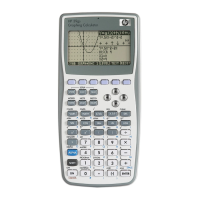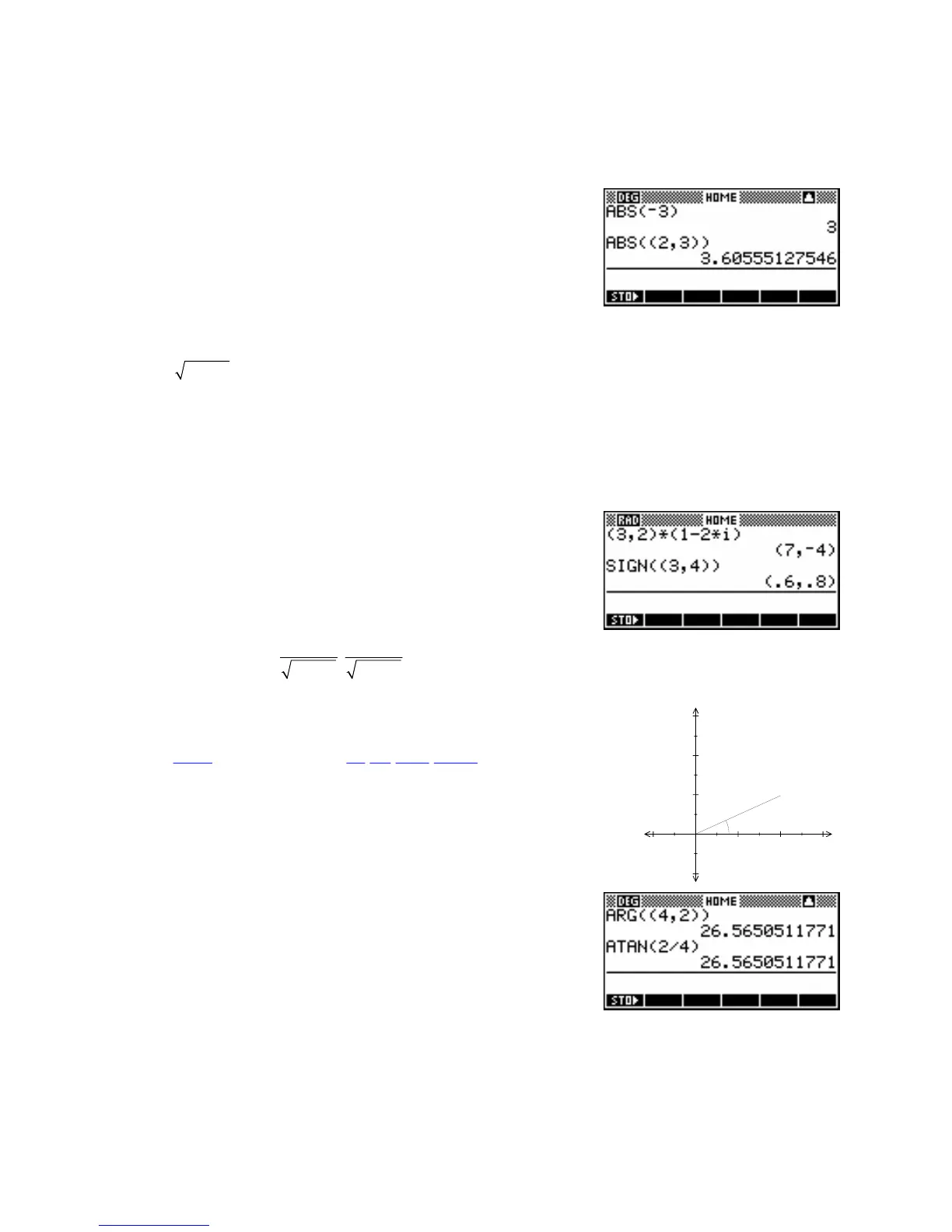In addition to the trig functions, there are other functions that take complex arguments.
ABS(<real>) or ABS(<complex>)
The absolute function, which is found on the keyboard above the left
bracket key, returns the absolute value of a real number.
Eg.
ABS(-3) returns a value of 3.
When you use the absolute function on a complex number a + bi it returns the magnitude of the complex
2
number as
a
+ b
2
. Note the requirement for double brackets in this case. The outer pair are those of the
function
ABS(…). The inner pair are those of the number in (a,b) format.
SIGN(<real>) or SIGN(<complex>)
This function is found in the Real group not the Complex group but is
very useful with complex numbers and so is also covered here. If given
a vector/complex number (a,b),
SIGN will return another
vector/complex number which is a unit vector in the direction of (a, b).
Note again the requirement for doubled brackets.
⎛
a b
⎞
i.e.
SIGN((A,B)) returns
⎜
⎜
,
⎟
⎟
.
2 2
⎝
a
+
b
2
a
+
b
2
⎠
y
This is very useful, not just in complex numbers, but also in vector problems.
6
See also:
SIGN (in the Real group),IM,RE,ARG,CONJ
4
2
27
o
ARG(<complex>) or ARG(<vector>)
x
–2 2 4 6
–2
This function, also found on the keyboard, returns the size of the angle
defined by regarding the complex number as a vector. For example
D
ARG(4+2i) would be
26 565
. The same information can, of course, be
⋅
obtained using trig. The result is dependent on the current angle setting
in MODES. Again, note the requirement for doubled brackets. Using
ARG(a+bi) instead avoids this requirement.
187

